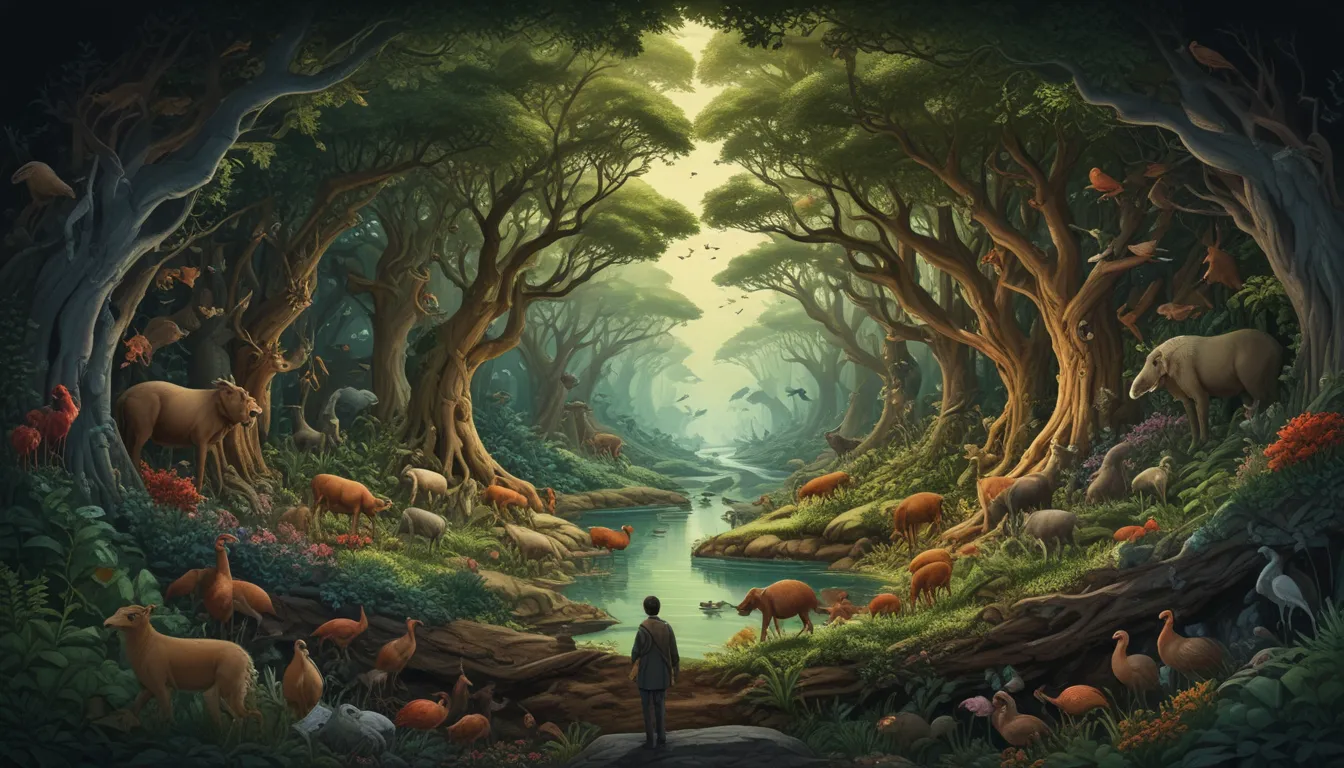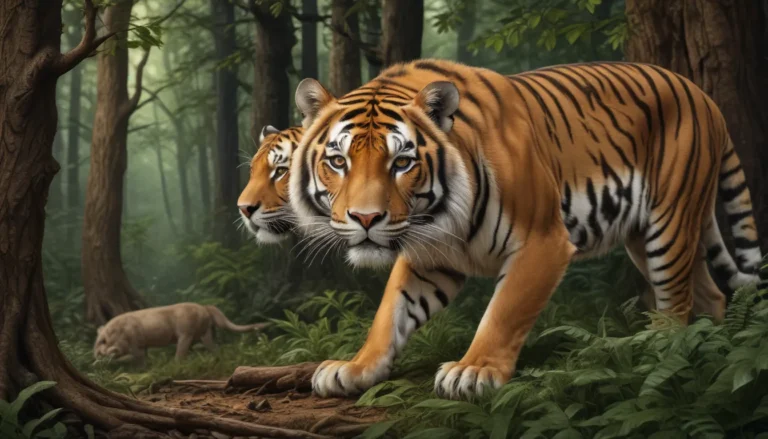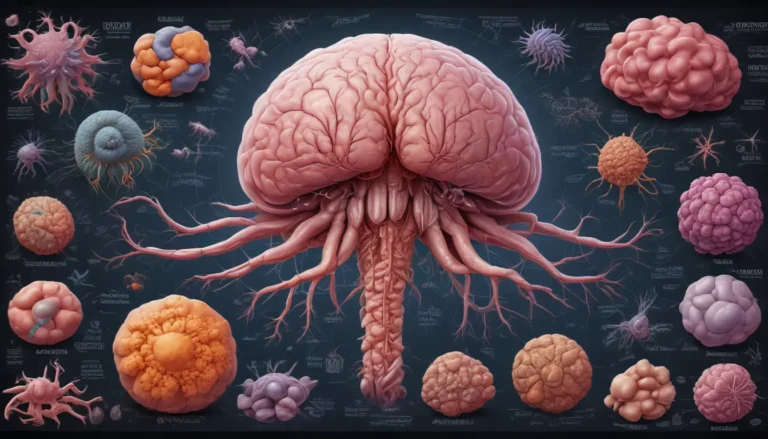A Note About Images: The images used in our articles are for illustration purposes only and may not exactly match the content. They are meant to engage readers, but the text should be relied upon for accurate information.
Population ecology is a captivating realm within the field of biology that delves into the intricate relationships between populations and their environment. Through studying factors such as birth rates, death rates, immigration, and interactions with their surroundings, population ecology provides valuable insights into the dynamics of life systems. In this article, we will embark on a journey to explore 11 intriguing facts about population ecology, shedding light on the delicate balance that exists in the natural world and the factors that shape populations over time.
Understanding Population Ecology
Population ecology is the study of how populations of organisms interact with their environment, focusing on factors that influence population size, growth, and distribution. By examining the relationships between organisms and their living and non-living surroundings, population ecologists gain valuable insights into the complex dynamics of life systems.
Factors Influencing Population Size
Population size is influenced by various factors, including birth rate, death rate, immigration, and emigration. Birth rate refers to the number of individuals being born, while death rate refers to the number of individuals dying. Immigration involves the movement of individuals into a population, while emigration involves the movement of individuals out of a population.
Interpreting Population Density
Population density, the number of individuals per unit area or volume, provides insights into the level of competition for resources within a population. It can impact various aspects of population dynamics, including reproduction, survival, and dispersal.
- Population density reflects the intensity of competition for resources within a population.
- High population density can lead to increased competition for resources, affecting reproduction and survival rates.
Patterns of Population Growth
Population growth can follow three primary patterns: exponential growth, logistic growth, or cyclic fluctuations. Exponential growth occurs when a population increases at a constant rate, while logistic growth levels off as the population approaches its carrying capacity. Cyclic fluctuations refer to predictable oscillations in population size over time.
- Exponential growth leads to a rapid increase in population size.
- Logistic growth reaches a stable population size known as the carrying capacity.
Principles of Population Dynamics
The principle of competitive exclusion suggests that two species competing for the same resources cannot coexist indefinitely. One species will eventually outcompete and displace the other, leading to the exclusion of the weaker competitor.
- Competitive exclusion drives species to adapt and evolve to reduce competition.
- Species may exhibit niche differentiation to coexist by utilizing different resources.
Impact of Density-Dependent Factors
Density-dependent factors have a greater impact on population dynamics as population density increases. These factors include competition for resources, predation, disease, and parasitism. As population density rises, the effects of these factors become more pronounced and can lead to population regulation.
- Competition for resources intensifies as population density increases.
- Predation and disease can limit population growth at high densities.
Influence of Density-Independent Factors
Density-independent factors affect population size regardless of population density. Natural disasters, such as hurricanes or wildfires, and extreme weather events, such as droughts or floods, can cause significant declines in population size, impacting population dynamics.
- Density-independent factors lead to sudden declines in population size.
- Extreme weather events can disrupt ecosystems and alter population dynamics.
Role of Keystone Species
Keystone species play a crucial role in maintaining the structure and functioning of ecosystems, with a disproportionately large impact relative to their abundance. Their presence or absence can have cascading effects on other species within the ecosystem.
- Keystone species regulate ecosystem diversity and stability.
- Removing a keystone species can lead to ecosystem collapse.
Conservation Insights from Population Ecology
Population ecology provides valuable insights into the management and conservation of endangered species. By understanding the factors influencing population size and growth, conservationists can develop strategies to protect and restore endangered populations through habitat restoration and captive breeding programs.
- Conservation efforts focus on preserving genetic diversity and maintaining sustainable populations.
- Population ecology guides conservation strategies to ensure the long-term viability of endangered species.
Practical Applications in Agriculture and Pest Control
The study of population ecology has practical applications in agriculture and pest control. Understanding population dynamics helps in managing crop pests and invasive species by identifying key factors that influence population growth and developing effective control strategies to minimize damage and economic losses.
- Sustainable pest management practices reduce environmental impact.
- Integrated pest management combines biological, cultural, and chemical control methods.
Human Impact on Population Ecology
Human activities can significantly impact population ecology through habitat destruction, pollution, and overexploitation of resources. Recognizing these impacts is crucial for sustainable management and conservation efforts to address changes in population sizes and ecological dynamics.
- Sustainable resource management promotes biodiversity conservation.
- Mitigating human impacts requires informed decision-making and conservation strategies.
Embracing the Intricacies of Population Ecology
Exploring population ecology unveils nature’s intricate connections and showcases the dynamic interactions within ecosystems. By understanding the factors that shape populations over time, we can make more informed decisions regarding conservation, management, and sustainable use of natural resources. Population ecology serves as a beacon of knowledge, guiding us in our efforts to preserve Earth’s biodiversity and maintain the delicate balance of life systems.
Conclusion
In conclusion, population ecology is a fascinating field that offers a deeper understanding of the dynamics and interactions of species within ecosystems. By delving into factors such as birth rates, death rates, immigration patterns, and resource availability, population ecologists unravel the complexities of life systems. Through this exploration of 11 intriguing facts about population ecology, we have gained valuable insights into the delicate balance that exists in the natural world and the pivotal role of population dynamics in shaping ecosystems.
FAQs
- What is population ecology? Population ecology is a field of biology that investigates how and why populations of organisms change over time, focusing on factors such as birth rates, death rates, migration patterns, and interactions with their environment.
- Why is population ecology important? Population ecology helps us understand the dynamics and interactions of species within ecosystems, providing insights into conservation, management, and sustainable use of natural resources.
- What is carrying capacity? Carrying capacity refers to the maximum number of individuals of a species that can be supported by an ecosystem without causing negative impacts or exceeding available resources.
- What are density-dependent factors? Density-dependent factors are factors that affect population size and growth rate in relation to the population density, such as competition for resources, predation, and disease.
- What is the difference between r and K selection? r-selection maximizes population growth rate, seen in organisms with rapid reproduction and many offspring with low survival rates. K-selection maximizes population size, seen in organisms with long life spans and fewer offspring with high survival rates.
- What is a metapopulation? A metapopulation consists of populations separated by habitat patches but connected through occasional migration and gene flow.
- How do invasive species impact population ecology? Invasive species disrupt native populations and ecosystems, outcompeting native species, altering habitat structure, and reducing biodiversity.
- Can population ecology predict future trends? Population ecology uses mathematical models to predict population dynamics and trends, though accuracy may vary depending on system complexity and available data.
- How does population ecology contribute to conservation efforts? Population ecology provides vital information for conservation efforts, helping identify endangered species, develop management strategies, and assess human impacts on populations and ecosystems.
- Is population ecology only applicable to animal populations? No, population ecology applies to all living organisms, studying how population dynamics affect ecosystem functioning and biodiversity.
Delving Deeper into Nature’s Wonders
Embrace the wonders of population ecology and embark on a journey to explore the intricate connections within ecosystems. By unraveling the dynamics of population interactions, we gain a deeper appreciation for the complexities of life on our planet. Let curiosity guide your exploration of nature’s tapestry, and let the wisdom of population ecology inspire you to protect and preserve the biodiversity that sustains us all.






